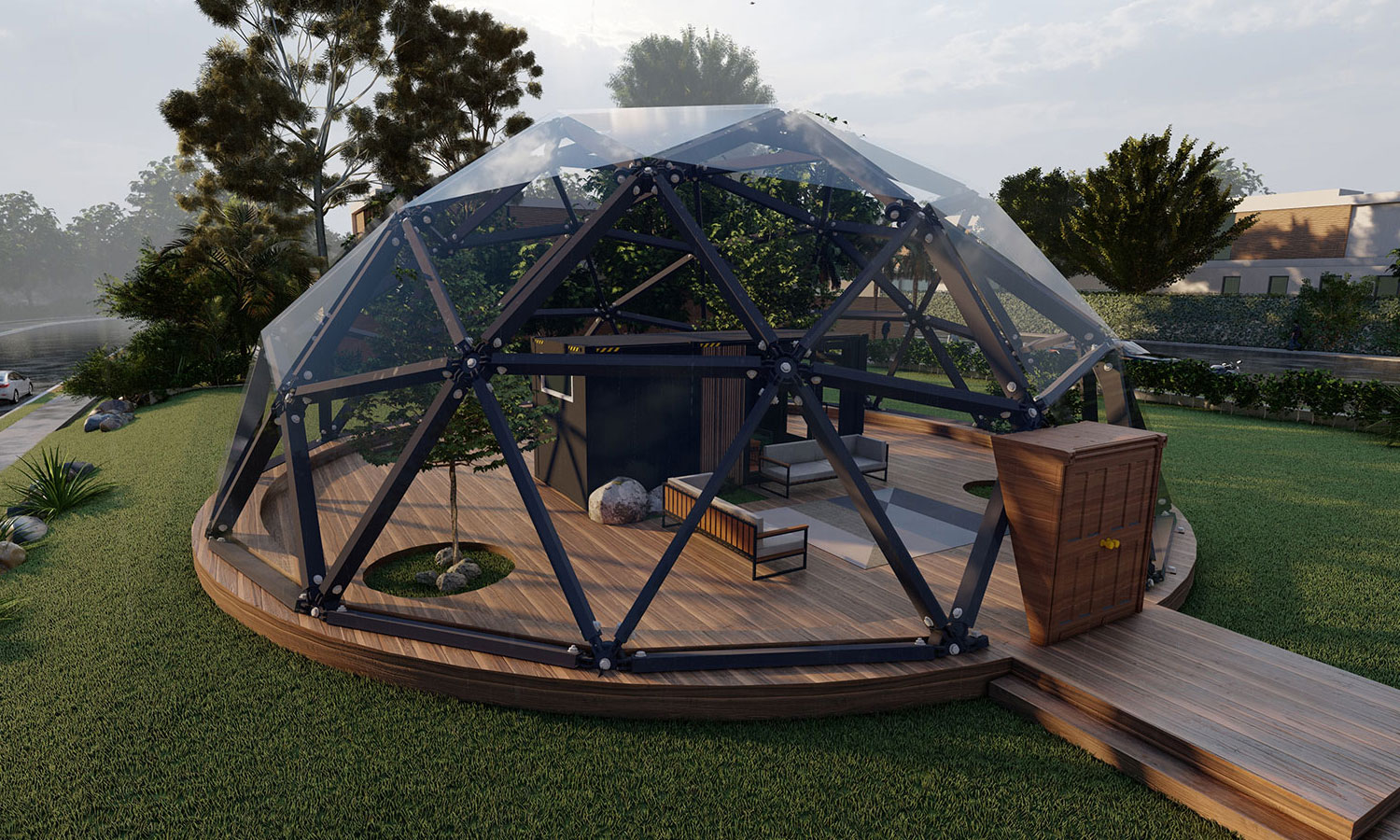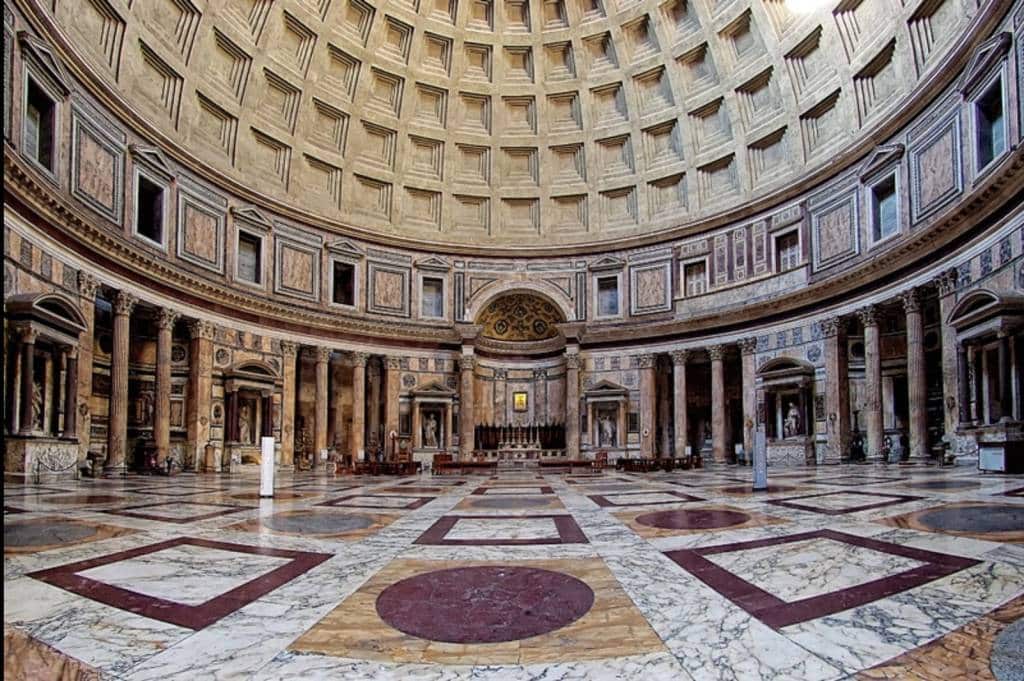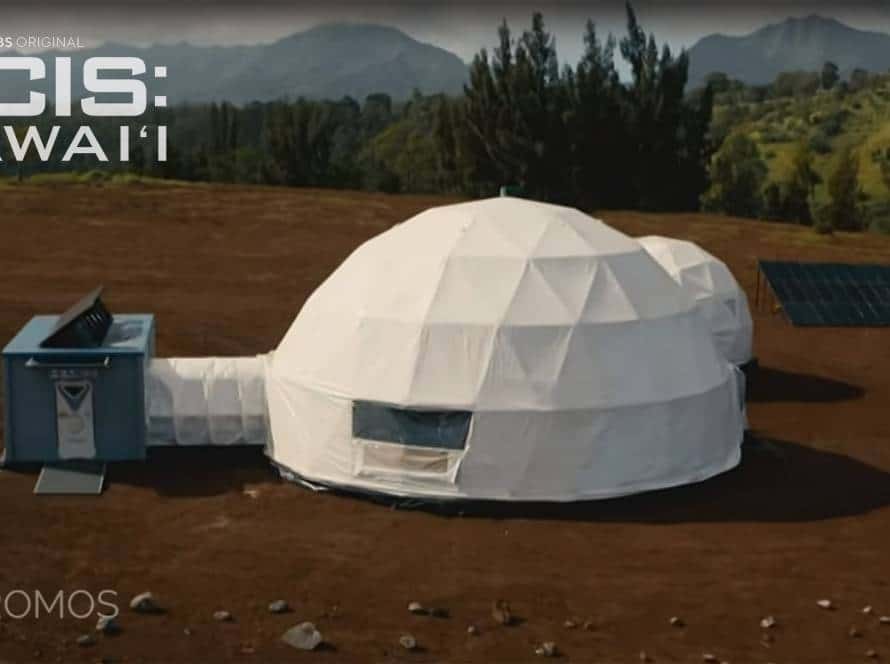From A Geodesic Structure To An architectural buildings.
The geodesic structure has been demonstrated to be a flexible and effective design in everything from ancient civilizations to contemporary architecture. The geodesic structure have established themselves as flexible and effective shape that highlights human skill and workmanship, from ancient civilizations to the current architecture. A geodesic structure is fundamentally a structural component that has the appearance of a hollow hemisphere or half-sphere. It is a three-dimensional geometric form that encloses a specific space, like a canopy or a vaulted ceiling. A geodesic structure design makes it possible for forces to be distributed equally, resulting in a self-supporting structure that can bear heavy loads. This article will define an hexagon dome, study several forms of hexagon domes, examine their many uses, and emphasize their many advantages.
What is an Hexagon Dome?
The form of a hollow hemisphere or half-sphere is similar to that of a geodesic structure (dome) , which is a structural component. A geodesic structure building is a three-dimensional geometric shape with an all-perpendicular curving surface that radiates outward from a central point, forming a symmetrical, rounded structure. Since the beginning of recorded history, the geodesic structure technology has been employed in buildings and may be seen in many different societies and eras. Observatories, stadiums, religious complexes, and even residential constructions have all been built using geodesic structures . For their durability and stability, geodesic structures buildings are renowned, the dome building can withstand external forces like wind and gravity because of the evenly distributed weight provided by the curved design.Hexagon Domes can be built out of anything from stone and brick to concrete and contemporary structural elements, depending on the area and time period.
The Pantheon, an Italian structure from the second century AD, is one of the most well-known examples of a geodesic structure . With an oculus (a circular hole) at the top, it has a large, unsupported concrete dome that lets natural light inside the structure. Hexagon domes are still utilized in architecture today for both aesthetic and functional reasons, they may provide a structure with a distinctive aesthetic appeal and are frequently connected with majesty and beauty. Geodesic Dome buildings can also be functionally advantageous by increasing interior space, improving acoustics, or effectively covering enormous regions. Explore additional information about geodesic domes by reading more here: geodesic structure.
Geodesic Domes: A geodesic dome is a self-supporting structure consisting of interconnecting triangles. These domes have become recognized for their durability and effectiveness in uniformly dispersing pressure. This style of dome was made popular by Buckminster Fuller, and they are frequently used for greenhouses, exhibition halls, and even residential buildings.
Monolithic domes: A monolithic dome is an uninterrupted, single shell built of reinforced concrete. It has earned a reputation for its resilience to natural calamities, durability, and energy effectiveness. Due to its superior insulating qualities, monolithic domes are perfect for a variety of settings, including sports venues, educational institutions, religious buildings, and storage facilities.
Skeletal Domes: Skeletal domes are identified by an internal system of ribs or frames that supports the dome’s form. This kind of dome allows for architectural versatility and may be built with a variety of materials, such as steel, wood, or even airy textiles. Skeletal domes are frequently employed as temporary buildings, event locations, and exhibition spaces.
These are only a handful of the numerous varieties of domes that may be found worldwide. Depending on the architectural, cultural, and historical context in which they are utilized, domes can have a variety of sizes, shapes, and construction materials.
Image Credit: Zomes.
Benefits of Hexagon Domes
Geodesic structures provide a number of advantages in a variety of circumstances, including those related to architecture, the environment, science, and practicality. Domes provide the following advantages:
- Structural Stability: Geodesic Structure is naturally sturdy constructions because of their curved design. The structure is resistant to external pressures like wind and snow loads because the curve uniformly distributes the forces applied to it. Dome architecture is more resilient to earthquakes and other natural calamities than conventional box-shaped structures.
- Efficient Space Utilization: Geodesic Structure offer an effective use of interior space. Compared to typical constructions with straight walls, its rounded design minimizes unused corner space, allowing for greater useable floor area. Applications including event rooms, sports stadiums, exhibition halls, schools, and living areas may all benefit greatly from this capability.
- Enhanced Solar Lighting: The rounded form of geodesic structure enables efficient natural lighting. The large surface area allows sunlight to enter, which reduces the demand for artificial illumination during the day. This not only uses less energy but also makes a cozy and welcoming environment.
- Energy Efficiency: Dome architecture has great thermal insulating qualities. Energy efficiency is increased since there is less heat transfer because there is less surface area than in conventional structures. Dome technology can maintain pleasant temperatures with a lower dependence on cooling and heating systems, thereby lowering energy costs and having a less negative impact on the environment.
- The versatility of Design: geodesic structure is extremely versatile and may be altered to fit a variety of architectural styles and functions. They may be built in a variety of sizes, from little garden huts to massive geodesic domes. The design’s adaptability enables innovative and distinctive architectural solutions.
- Cost-Effectiveness: Depending on the materials used, building expenses for dome buildings maybe even less expensive than those for conventional structures. Long-term cost reductions are facilitated by the effective utilization of space and lower energy demands. Domes’ strong structural stability also frequently results in less frequent maintenance and longer lifespans.
- Benefits for Sounds: In some situations, the form of a dome technology might be advantageous for acoustics. In order to reduce echoes and improve sound quality, the curved surfaces aid in the uniform distribution of sound waves. Because of this quality, domes are ideal for music halls, theaters, and other locations where ideal acoustics are sought.
- Environmental Sustainability: Geodesic Structures are energy-saving characteristics, less material use, and little environmental effect make them compatible with sustainability objectives. They become even more environmentally friendly due to the use of recyclable and renewable materials as well as the possible incorporation of green technology like solar panels.
- Rapid Construction: In some circumstances, hexagon domes may be built more quickly than using conventional building techniques. Pre-fabricated dome structures may be put together on-site, cutting down on construction time and expenses. This benefit may be especially useful for temporary buildings or emergency shelters that are required in an emergency.
- Iconic and Aesthetic Appeal: Geodesic Structures frequently have a visually arresting and distinctive aspect that attracts attention and stands out in landscapes. They may help a building look more appealing architecturally and become a landmark or object of interest because of their distinctive shape and design.
It’s important to keep in mind that the precise advantages of domes and dome technology might change based on their design, construction, and intended use. Find out more about domes by reading this article on hardshell domes.




